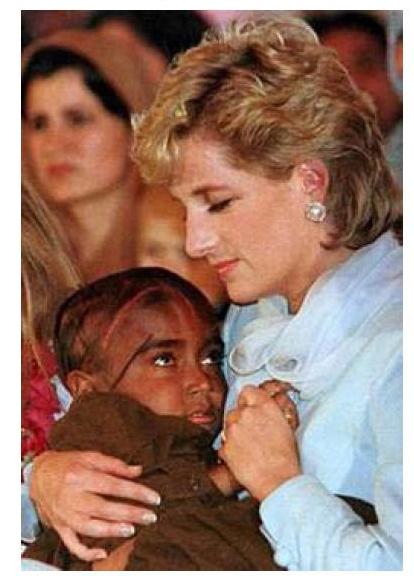The Impact of Media on Society
2016-08-02李古今


Medium is the transmission tool that helps deliver information in communication (Noll,2007). They are not only overlapped with culture and society, but also connected with many areas such as politics and economics (Lawrence,2005). Therefore, media are closely involved in peoples daily lives and it is significant for us to have a better understanding of media, particularly on how they influence people and society. Brown(1987) argues that “media are considered powerful for bringing changes to human lives…, they invade and eye the whole society…but still make it possible for human beings to communicate with other millions of people”. Thus, media cause social changes on one hand and provide social control on the other(Lawrence, 2005).
This essay aims to discuss the impact of media on society by focusing on two types of media---photo and film. Photo is a medium which transmits the information via visual representations(Manohar,2011). Geertz(1994) claims, “since the beginning of photography, images have provoked reactions in people and those reaction caused people to make a change”. And film, as a part of electronic media, transmits its information electronically(Manohar,2011). It is considered to have large impact in audiences for it is not imposed and audiences are willing to get transported to another world for two or three hours (Bharti,2008). Two case studies, which are a photo which “Princess Diana hugs an AIDS child” and the movie Kill Bill, are presented in the following text to illustrate the impact of media on society.
According to Heidegger(1930s), we are now entering a world image era, the image here does not mean the worlds photo, it means that the world is grasping as image. Therefore, photo plays a more and more essential role in the visual communication era. As important visual communication symbol, picture has a strong appeal and wide applications(Brown,1987). Picture contains the advantage of transmitting meaning as clearly as words can, while at the same time does not bother people to read. Xu Cai(2002) argues that “the experience of human today is much more visualized than any time in the past”. In general, photo has the following functions: the visual impact, the social responsibility and humanistic care spirit (Xu, 2002).
The picture “Princess Diana hugs an AIDS child” is a good example to explain how a photo transmits meanings and influences humans attitude towards AIDS.
The text, context and subtext in this picture are as follow. According to Bharti(2008), text means the media form and content; context is the historical and cultural environment behind the text; subtext is the secondary or implied meanings. Thus in this picture, the text is the picture itself and the content in the whole picture including the figures, clothes, color, eyes and facial expression, etc. We can see the costume of Princess Diana is appropriate; the facial expression on her face is sincere and pitiful. However, the most important text in this photo is the action that Princess Diana is hugging the little Ethiopian child who has been infected with AIDS. The context of the image is the historical and cultural background at that time. This photo was taken in 1987 and back then people are scared of AIDS and stayed far away from AIDS patients partly because they knew very little about AIDS (Fei, 2004). The meaning behind of this photo is mainly about the care for the AIDS patients, social responsibility and anti-discrimination on race. Former President Bill Clinton said in 1987 that “when many people believed AIDS could infect through body touch, Princess Diana sat on the HIV patients bed and hugged him, she told the world what AIDS patients needed is not isolation but caring” (Fei,2004). The appearance of the little Ethiopian child in the content, no matter chosen intendedly or randomly, conveys a connotative significance of the anti-discrimination on race.
After the spreading of this image, wide attentions were drawn and people began to understand that AIDS cannot be infected by physical interaction evident by the photo in which Princess Diana hugged the little boy tightly. Gradually, people started to know more about AIDS and remove their misconceptions towards AIDS patients. What is more, people around the world receive the same message from the picture without language barriers. Therefore, photo, like the one illustrated above, could have huge influence on people and society.
Like photos, movies also enjoy the advantage of minimal language barrier(Bharti,2008). However, unlike photos which are motionless, movies is combined of motional pictures and sound, which makes them very vivid and attractive to audiences(Bharti,2008). As it is appeared in the 19th century, film medium have been very influential in many different aspects of peoples life, for instance, recreation, business, culture and education(Bordwell, 2011).
The second case this essay employs for analyzing the impact on society is the movie Kill Bill.
Kill Bill is a classical movie famous for its violence aesthetics. It tells a story of “Black Mamba” who took revenge. On her wedding, all Mambas relatives and friends have been killed by Bill and his follow. However to audiences biggest surprise Mamba did not die and regained her conscious four years later in hospital. She undertook training of martial arts and started to hunt Bill in many cities. On her journey, she killed many people who murdered her friends and eventually she took her revenge on Bill.
The movie employs violence aesthetics, which is a new artistic form to express the violent actions through an aesthetic feeling(Gu,2008), to better transmit information, such as the feelings of fear and anger, to the receivers. In the fighting scenes, all the actions had been settled in advance and the actions are interesting, exaggerated and beautified, which brought an exciting and wonderful visual experience to audiences. It is a great advantage of movies to be able to invite audiences to “walk inside” the scene and have an experience as if it is for real(Bordwell, 2011).
However, if people, especially those youths, watch too many violent movies, such as Kill Bill, they are likely to imitate the ways people talk, think and behave in the movie(Anderson 2005). According to the research of Craig A. Anderson (2005), 30% of the juvenile delinquency has been triggered by violent movies. In Kill Bill, for example, in a fierce fighting scene in Blue Leaves House there are full of blood, broken arms and legs, which could not only scares people but also causes audiences to perform inappropriate imitations. All of these information transmitted by film would generate a very negative impact on teenagers in term of education.
The second impact of this film is on economy. As a part of electronic media, movies are also more transportable(Bharti,2008) compared with traditional media such as books. Audiences all over the world could have the access to the latest Hollywood block busters without going to Hollywood. This makes movie industry appealing to business people. In particular, in Kill Bill, according to director Quentin Tarantino, violence is a good selling point in this movie and the best scenes are shown. Due to the human nature, violent scenes easily provoke people to be excited(Gu,2008). People were attracted to watch those violent actions and scene of killing in cinema. As a result, this movie took a whopping 500 million dollars at the global box office, which pushed the economic developments in cinema, film-making company and the whole film industry(Vany, 1999). Thus, to sum up, violent movies as a part of media has impact on economy and education.
In conclusion, “media has the power to produce effects and make a difference in the world”(Bharti, 2008), photo media and film could have great impact in peoples attitude, thoughts and behavior. In the picture of Diana, peoples notion and attitude towards AIDS changed by the power of “causality”(Bharti,2008). Diana can be seen not only as symbol of care and love but also wisdom and power. If people see it is fine for someone as majestic as Princess Diana to hug an AIDS child in the photo, then it must be rational, safe and kind for normal people like themselves to do the same thing, or at least not afraid of or discriminate against AIDS. In the second case Kill Bill, it can be seen that in the “transition model of media”(Bharti, 2008) the message of fear and anger is delivered by the screen and audiences can receive the same information. However, psychologically, their mind is affected as they increasingly absorb the information of violence and that lead to the tendency of anxiety, fear and violence in the real world(Anderson,2003). This is the way how media can influence people. Above all, media have huge influence on people and media such as photo and film could either cause a positive or negative impact on society.
References
[1]Anderson, Craig A., Berkowitz.L, Edward Donnerstein, L. Rowell Huesmann.(2003). The Influence of Media Violence on Youth. American Psychological Society Press.
[2]Bharti, S. (2008) Mass Communication and Society. Jaipur: Global Media.
[3]Bordwell, D.(2011).Minding movies : observations on the art, craft, and business of filmmaking. Chicago: The University of Chicago Press.
[4]Brown, J. (1987) Invisible power: News sources and the limits of diversity. Journalism Quarterly.
[5]Buckingham, D.(2003). Media Education: Literacy, Learning and Contemporary Culture. Cambridge: Polity Press.
[6]Craig, A.(2005).The influence of media violence on youth. Journal of Experimental Child Psychology. 15(7) 24-28.
[7]Fei, S.(2004). Beauty and sadness Diana. Chinese Social Science Press.
[8]Geertz, H. (1994) Images of Power. University of Hawaii Press.
[9]Gu, Q.(2008).Violence Aesthetics in Movies. Journal of Hunan University of Technology (Social Science Edition):15(7).8-12.
[10]Lawrence, G. (2005) MediaMaking: Mass Media in a Popular Culture. Sage Publications
[11]Manohar, U. (2011). “Different Types of Mass Media”.http://www.buzzle.org/articles/different-types-of-mass-media.html.
[12]Noll, A. M. (2007) The evolution of media. Lanham: Rowman& Littlefield Publishers.
[13]Rappaport, P. (2002) The internet and the demand for news. Prometheus
[14]Vany, D and Walls, D.(1999).Uncertainty in the Movie Industry: Does Star Power Reduce the Terror of the Box Office. Journal of Cultural Economics .23(4)285-318
作者簡介
李古今(1989-),女,黑龙江哈尔滨人,硕士,助教,英汉翻译。
